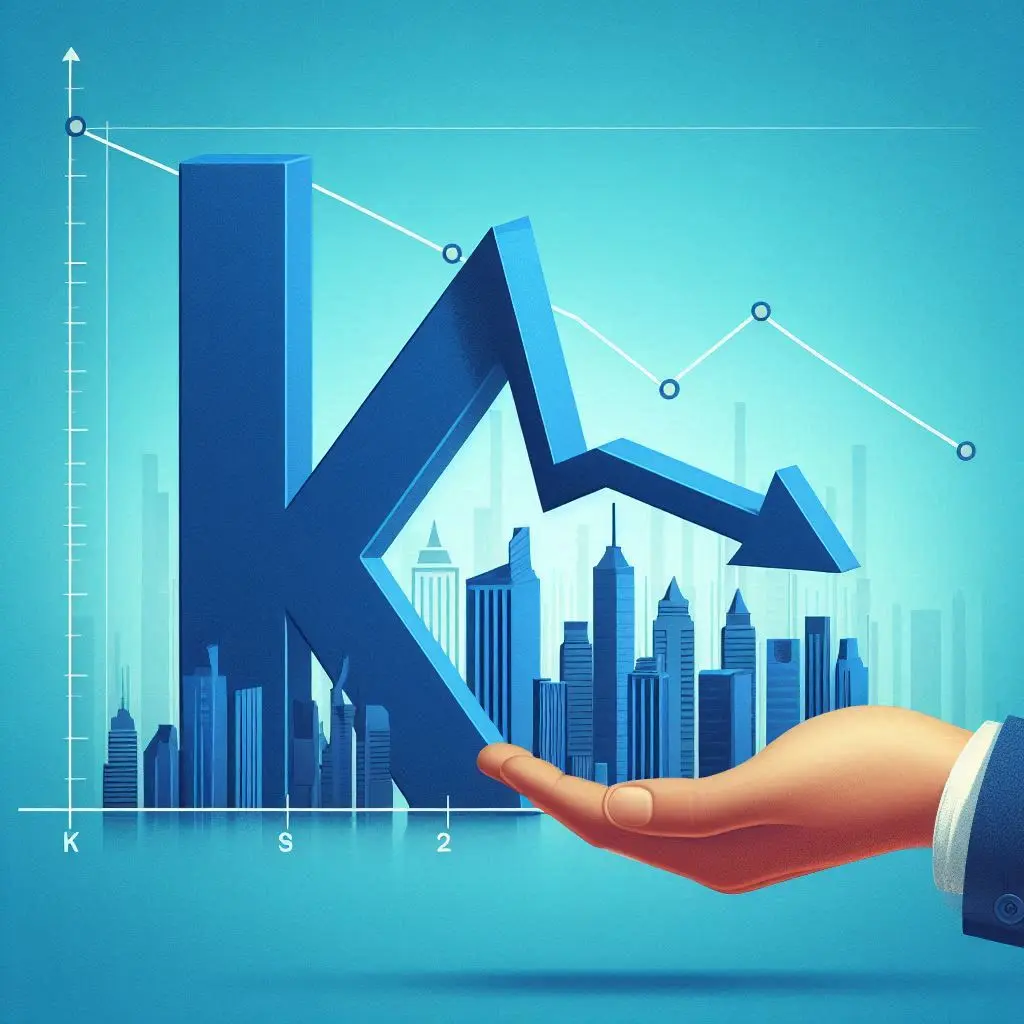Understanding the K-Shaped Recovery: What It Means for the Global and Indian Economy
The idea of the K-shaped recovery is a scenario that began to be actively discussed in recent years and is associated with the state of the global economy after the COVID-19 pandemic. This article seeks to explain what a K-shaped recovery is, how it impacts various economies including china, Canada, and India and how it plays out at the sector and individual level.
What Does K-Shaped Recovery Mean?
K-Shaped recovery therefore is a term used to describe a situation whereby, different sections or segments in the economy recover at different rates making it ‘K’ shaped. What is important to realize is that some industries grow strongly after the recessionary period, others might stagnate or, recover only gradually. Such an unbalanced effect produces gaps, substantial altering features of economic performance, as well as changes in the functions of society.
K-Shaped Recovery Economy: A Closer Look
Thus, in a scenario of K-shaped, the economy is a boulevard without equal for all of the above-stated reasons. For instance, the technology sectors quickly bounced back during Covid the pharmaceuticals, while the hospitality, tourism and the small businesses were incapable of getting back on their feet. This results in the formation of a dual structure of the economy whereby the benefits and risks are not shared among the population.
K-Shaped Recovery in China and Canada
K-Shaped Recovery China
Chinese economy in the post-pandemic era was nucleated as ‘K-shaped’. Some key industries such as big multinationals and the technological sectors quickly got back to their optimal productivity level while the SMEs especially those who operated in the service industries stagnated for some time. This has however painted a disparity of recovery with several sectors exposed while on the other side groups within the economy are more exposed than others.
K-Shaped Recovery Canada
What is important to examine concerning K-shaped recovery in the scenario of Canada is how the recovery of classes divides the population into richer and poorer and into homeowners and renters. B2B sectors have benefited, while the face-to-face oriented sectors like retail sales and hospitality have suffered. This has intensified the uneven structure which was already in place within the economy of Canada.
K-Shaped Recovery Chart: Visualizing the Disparities
A K-shaped recovery chart typically illustrates two diverging lines: One of the indexes show sectors or groups that are in recovery and or are indeed in a growth phase while the other index reveals those in decline. This can be easily illustrated to present the idea on how there are two distinct humps to a K-shaped recovery and who benefitted the most and who was badly affected.
SBI’s Perspective on the K-Shaped Recovery in India
This was revealed in a report from the SBI capitalist official of India that averred that recovery from the recent economic down-turn has followed K-shape. The note makes observations to the effect that while some industries such as technology and pharmaceuticals have quickly returned to growth, others have remained a problem, especially those represented in rural areas and old economy lines of work. The fact that this recovery pattern has been uneven is quite worrying when put into consideration that a large part of India’s population is rural.
Debunking K-Shaped Recovery: Is It an Oversimplification?
Although the analysis based on the K-shaped recovery allows to comprehend the economic differences between countries and different social groups, some scholars have pointed out that this concept generalizes the process of economic recovery and does not take into account all its features. It will be preferable to employ another model that focuses on the details of how various sectors and demographic groups experience recessions and how they build themselves up again. However, the hypothesis of K-shaped recovery is still important in the theoretical classification of economic differentiation.
Indian Economy and the K-Shaped Recovery: A Deep Dive
Indian Economy K-Shaped Recovery
This paper aimed at analysing whether the Indian economy has a K-shaped recovery and more so, whether this scenario is visible in the recovery from the COVID-19 impact. Organizations in some industries have made good progress: IT industries, the pharmaceutical industry, and large organizations have recovered; however, industries like hospitality industries, tour industries, and small-scale industries are not at par. The inequality in employment can present various problems for policy makers since it distorts earning disparity between the two groups of people.
K-Shaped Economic Recovery UPSC Perspective
From the facets of UPSC, it is important for the aspirants to understand the K-shaped recovery to understand the macroeconomic features. It entails the understanding that not all parts of the economy have pulled through in their recovery process and hence the necessity for policy interventions. The K-shaped recovery also supports calls for more pro-actively inclusive policies of growth, which should not abandon any field or group.
What is K-Shaped Recovery UPSC?
In the context of UPSC exams, a K-shaped recovery refers to the phenomenon where post-recession recovery is uneven, with some sectors or groups recovering quickly while others continue to struggle. This concept is vital for understanding economic disparities and formulating policies that promote equitable growth.
K-Shaped Recovery in Hindi (K-आकार की रिकवरी)
K-आकार की रिकवरी का मतलब है कि मंदी के बाद, अर्थव्यवस्था के विभिन्न हिस्सों में अलग-अलग दरों पर सुधार होता है। कुछ क्षेत्र तेजी से बढ़ते हैं जबकि अन्य पिछड़ जाते हैं या संघर्ष करते रहते हैं। यह असमानता अर्थव्यवस्था के विभिन्न वर्गों के बीच आर्थिक विषमता को बढ़ा सकती है और नीति निर्माताओं के लिए चुनौतियां पेश कर सकती है। You can change language in hindi of entire blog also
The K-shaped recovery is a complex phenomenon that highlights the uneven impact of economic crises across different sectors and groups. As countries like China, Canada, and India navigate their respective recoveries, understanding this concept becomes essential for addressing the resulting disparities and ensuring a more balanced and inclusive growth trajectory.
